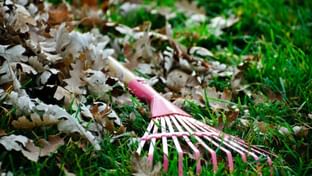Feeding your compost
Published: 22nd April 2022
Sarah’s compost heap is looking quite healthy and there’s certainly more on it now. You may have seen it changing with our #compost tweets, there are more items being added and a few bugs to be found. Yet, composting is a slow process so no compost has formed yet and the peelings etc look the same.
If you want good compost that forms quite quickly (in the grand scheme of compost anyway) you need to make sure that you put the right items in it. You’ll hear advice about greens and browns, good mixes and interesting stories.
Here are the basics for you. Items that compost are commonly called greens and browns. A ‘green’ item is quick to breakdown and generally has a high moisture content. A brown is dry and is usually quick bulky and more brown in colour! These lists give you examples of both – but it really isn’t about the colour of the items. You need a good mix of items to avoid problems, try for a mix close to half of each.
Greens
- Vegetable peelings and skins
- Apple cores
- Vegetable stalks and extra leaves you don’t cook or eat
- Coffee grounds and tea bags
- Grass cuttings
- Cut flowers
- Bedding plants
- House plants
- Straw and hay
Browns
- Cardboard including toilet roll tubes
- Egg boxes
- Twigs
- Paper bags
- Hair
And to avoid
There are some things that should not go in your compost bin, apart from the obvious plastic bags, wrapping, bottles and cans you should also avoid composting these items at home.
- Only put in uncooked items that are fruit and vegetable based. If you have leftover cooked food use your food waste recycling service instead. Never put in dairy products (cheese, milk), meat products or fish.
- Bread (remember to saveaslice)
- Cat and dog poo
- Soiled tissues
- Weeds – some weeds leave seeds and can grow anywhere, you don’t want them in your compost so avoid putting them in
A few other ingredients
To make compost you also need moisture, air and heat. There’s lots of moisture in the green items and you can water your compost if it’s particularly warm and it looks very dry or simply leave the lid off the bin to let the rain do it for you if that’s possible. You wouldn’t want to eat dried food all the time and the bugs needed to break down the organic matter feel the same way. Too much water isn’t good for it though, if it’s really wet add more brown items and mix it to absorb the moisture.
You can create air pockets in your compost when you add your brown items. A toilet roll tube or corrugated cardboard are good for this. You can introduce more air by turning your compost regularly, maybe each fortnight, once a month or whenever you cut the grass.
The compost makes the final ingredient, heat. However, you may wish to cover a heap with carpet in winter or insulate your compost bin if it’s particularly cold – hopefully not this month though!
Keep feeding your compost, if you don’t add anything it’ll slow down how quickly its breaks down to form compost.
Like Sarah we suggest you keep a container in the kitchen for items to compost and one for things that should go in your food waste recycling collection instead but just do what works for you in the kitchen.
Sometimes compost appears to go a little wrong, there are some common ‘I think I’ve done something wrong’ moments and we’re going to look at some of those next week. If you have any compost issues we’d love to hear from you and hopefully we can help – Tweet, on Facebook or by dropping us an email.
Meterials related to this Event






